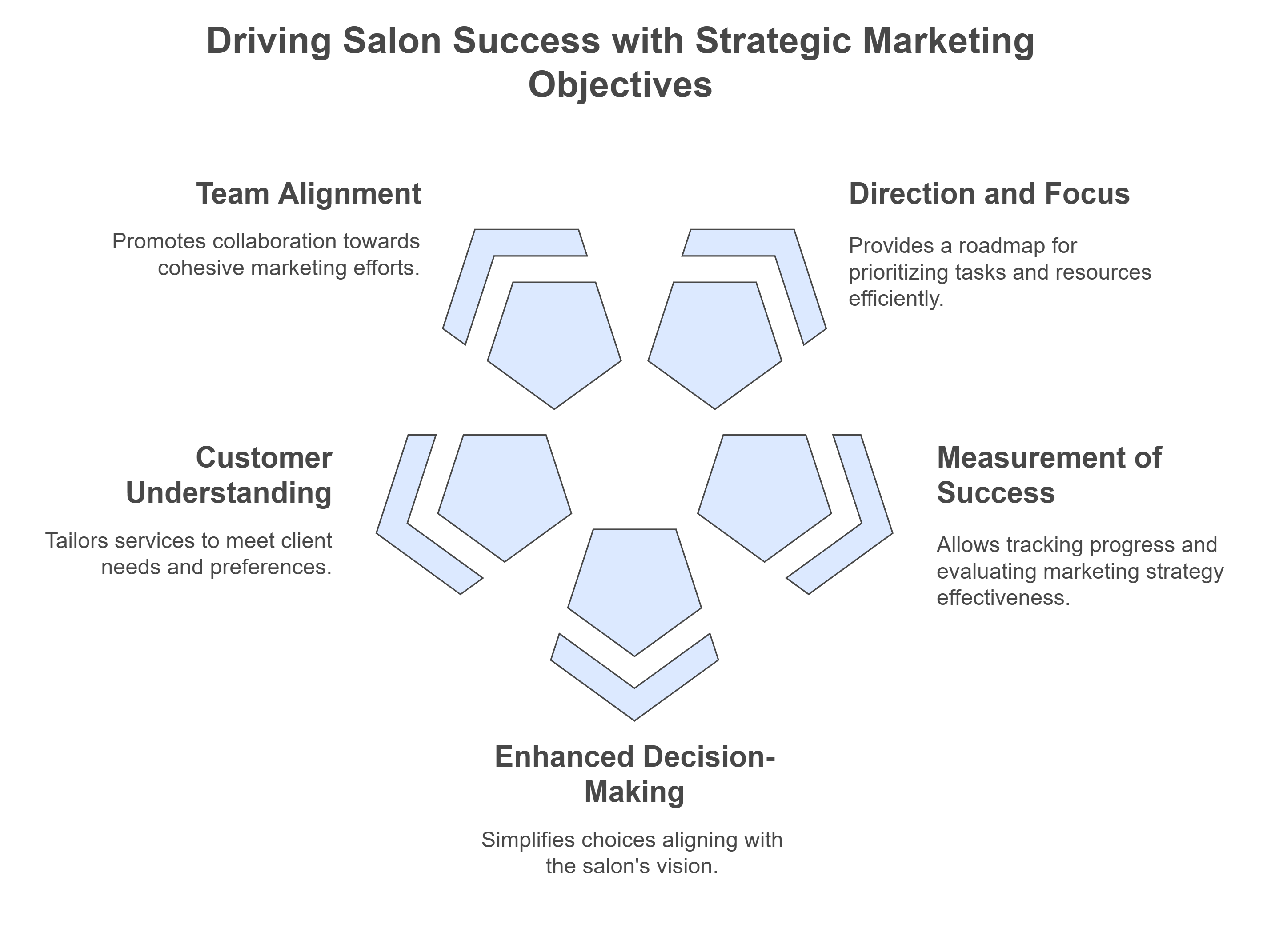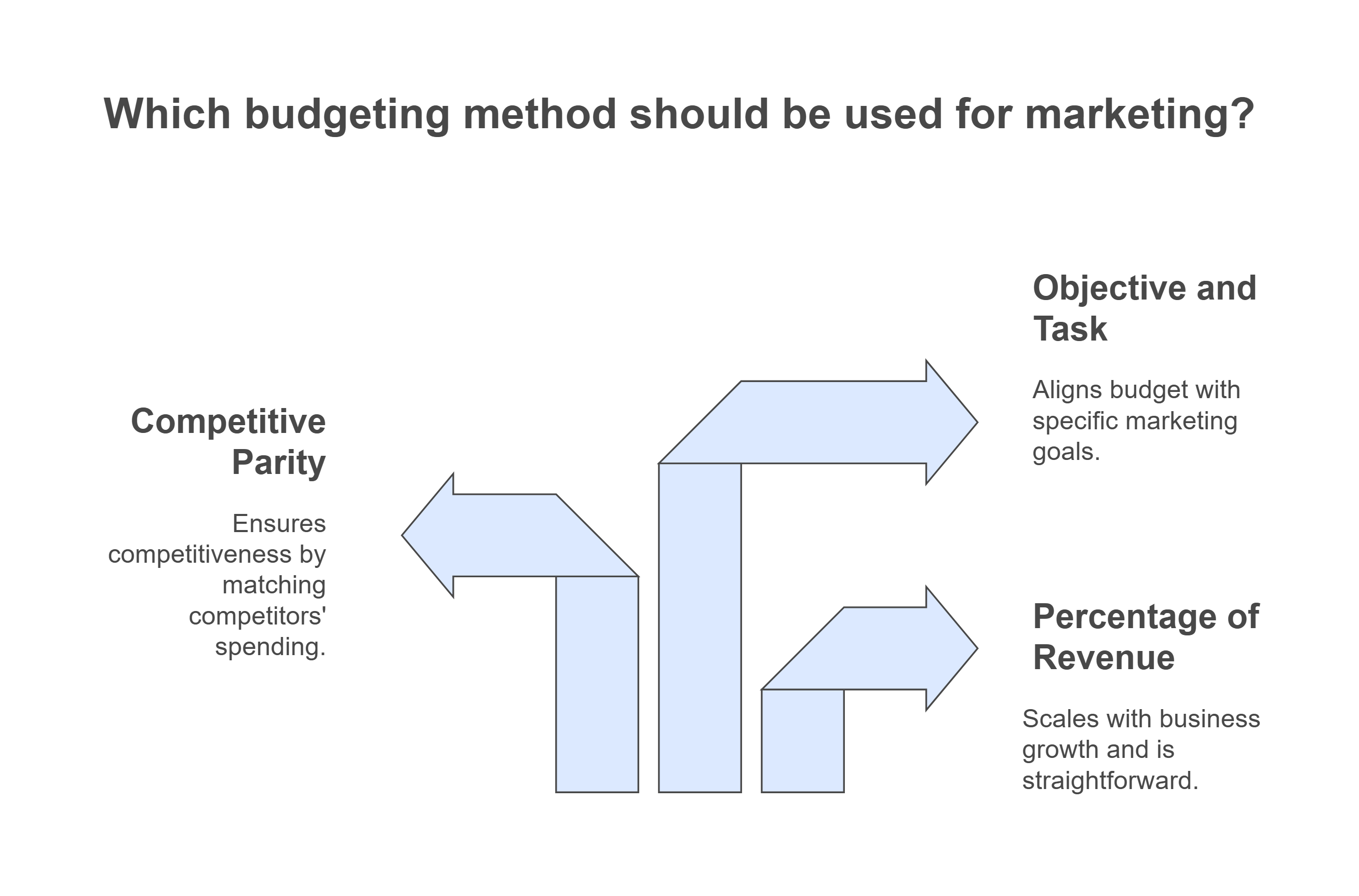How to Create a Hair Salon Marketing Plan

Table of Contents
ToggleRunning a salon isn’t just about great hair—it’s about getting people in the door and keeping them coming back. But with so many marketing options out there, where do you even start?
Don’t worry, we’ve got you! In this guide, we’ll walk you through a simple, effective marketing plan to help you attract new clients, build loyalty, and grow your business without feeling overwhelmed.
Key Takeaways
Identify your target audience through demographics and preferences.
Set specific short-term and long-term marketing goals to guide your efforts.
Craft a unique selling proposition that highlights what makes your salon special.
Utilise a mix of digital marketing, social media, and local tactics to reach clients.
Regularly review and adjust your marketing plan based on performance and feedback.
Understanding Your Target Market
Figuring out who you’re trying to reach is the first thing you should do. It’s like setting a destination before you start driving – you need to know where you’re going! Without a clear picture of your ideal client, your marketing efforts might miss the mark.
Identifying Client Demographics
Start with the basics. Think about things like:
Age
Gender
Location
How much money they make.
Are you aiming for young professionals in the city centre, or are you more focused on families in the suburbs? Maybe you want to attract students? Knowing these details helps you tailor your message and choose the right marketing channels.
For example, if you’re targeting students, you might want to focus on social media and offer student discounts. If you’re targeting older clients, you might want to use more traditional methods like local newspaper ads.
Analysing Client Preferences
What do your clients really want?
What services are they most interested in?
What are their beauty routines like?
How much are they willing to spend on their hair?
Understanding their preferences helps you create services and packages that they’ll love. It also helps you communicate the value of your salon in a way that resonates with them. Think about sending out surveys, or even just chatting with your clients during their appointments to get a better sense of what they’re looking for.
Assessing Market Trends
What’s hot and what’s not? The beauty industry is always changing, so it’s important to stay up-to-date on the latest trends.
Are people obsessed with balayage?
Are they all getting into bold, bright colours?
Are they looking for more sustainable and eco-friendly products?
Knowing these trends helps you adapt your services and marketing to stay relevant and attract new clients. Keep an eye on social media, industry publications, and what other salons are doing to stay ahead of the curve.
Market research is really important. It helps you understand your customers and what they want. It also helps you see what your competitors are doing, so you can find ways to stand out. If you don’t do your research, you’re basically guessing, and that’s not a good way to run a business.
Setting Clear Marketing Objectives

Before you start thinking about Instagram posts and local ads, it’s really important to figure out what you actually want to achieve. What’s the point of all this effort if you don’t know where you’re going?
Defining Short-Term Goals
Think about what you want to achieve in the next few months. These are your short-term goals. Maybe you want to attract a certain number of new clients, increase your appointment bookings, or boost sales of your retail products.
Here are some examples:
Increase new client bookings by 15% in the next quarter.
Promote a specific service (like balayage) and get 20 new bookings for it this month.
Increase retail product sales by 10% through targeted promotions.
Establishing Long-Term Vision
Now, let’s zoom out a bit. Where do you see your salon in a year, five years, or even ten? This is your long-term vision. Do you want to open another location? Become the go-to salon in your area? Or maybe develop a line of your own hair products? Having a clear vision will help you make decisions about your marketing strategy.
Some long-term vision examples:
Become the leading salon for colour correction in the city within three years.
Open a second salon location in a neighbouring town within five years.
Develop a strong brand reputation for providing exceptional customer service.
Measuring Success Metrics
How will you know if your marketing efforts are actually working? You need to define some key metrics to track. This could include things like website traffic, social media engagement, client retention rate, and, of course, revenue.
Here’s a simple table to illustrate:
Metric | Target | How to Track |
|---|---|---|
Website Traffic | 20% increase in monthly visitors | Google Analytics |
Social Media Engagement | 15% increase in likes and shares | Platform analytics (Instagram, Facebook, etc.) |
Client Retention Rate | Increase from 60% to 70% | Salon software reports |
It’s easy to get caught up in the day-to-day running of your salon, but taking the time to set clear marketing objectives is an investment that will pay off in the long run. It gives you a roadmap to follow and helps you stay focused on what matters most: growing your business and providing amazing service to your clients.
Crafting Your Unique Selling Proposition
Okay, so you’ve got a salon. Loads do, right? What makes yours different? This is where you figure out your Unique Selling Proposition (USP). It’s basically what makes clients pick you over everyone else. It’s not just about being ‘good’ – it’s about being good at something specific.
Highlighting What Sets You Apart
Think about it. What do you do better than anyone else? Is it a particular treatment? A vibe? Maybe you’re the only salon in town that uses a specific, fancy product line. Or perhaps your customer service is just next level.
Whatever it is, shout it from the rooftops! Don’t be shy. If you’re amazing at balayage, say it. If you offer the most relaxing head massage ever, tell people. It’s about finding that thing and making it your signature.
Communicating Your Brand Values
What does your salon stand for? Are you all about eco-friendly products? Do you champion body positivity? Maybe you’re focused on providing a luxury experience for busy professionals. Your brand values should shine through in everything you do, from your social media posts to the way your staff interacts with clients.
It’s about creating a consistent message that people can connect with. If you value sustainability, show it! Use recycled materials, partner with eco-conscious suppliers, and talk about it online. People appreciate authenticity.
Creating a Memorable Client Experience
It’s not just about the haircut or the facial; it’s about the whole experience. From the moment a client walks through the door (or visits your website), they should feel special. Think about the little things: the welcome drink, the comfy chairs, the friendly chat. And don’t forget the follow-up!
A simple thank-you email or a birthday message can go a long way. Make sure every client leaves feeling like they’ve had more than just a treatment – they’ve had an experience. I went to a salon once that remembered my coffee order from my previous visit. It’s small things like that that make a difference.
Developing Effective Marketing Strategies
Okay, so you’ve got your target audience sorted, your objectives are crystal clear, and your unique selling point is, well, unique. Now comes the fun part: actually getting the word out there. It’s time to look at some marketing strategies that will work for your hair salon. It’s not just about shouting the loudest; it’s about being smart and strategic.
Utilising Digital Marketing Channels
Salon digital marketing can feel like a minefield, but honestly, it’s worth getting to grips with. Think of your website as your online shop window – make sure it looks good, is easy to use, and tells people what you’re all about. SEO (Search Engine Optimisation) is key here. You want to show up when people search for “hair salon near me”.
Email marketing: Don’t underestimate the power of a good email. Keep your clients updated with offers, news, and maybe even a birthday treat.
Pay-per-click (PPC) advertising: Google Ads can be a quick way to get your salon seen, but make sure you target the right keywords.
Content marketing: Blog posts, videos, how-to guides – anything that shows you know your stuff and provides value to potential clients.
Digital marketing isn’t a one-size-fits-all thing. Experiment, see what works for your salon, and don’t be afraid to ask for help if you’re stuck.
Leveraging Social Media Platforms
Social media is where a lot of people spend their time, so it makes sense to have a presence. But it’s not enough to just be on social media; you need to be engaging and consistent. Think about what platforms your target audience uses and focus your efforts there.
Instagram: Great for visual content – before-and-after photos, videos of hairstyles, salon tours.
Facebook: Good for building a community, sharing news, and running competitions.
TikTok: If you’re targeting a younger audience, TikTok can be a great way to showcase your salon’s personality.
Implementing Local Marketing Tactics
Don’t forget about good old-fashioned local marketing. Sometimes, the best way to reach people is right on your doorstep.
Partnerships with local businesses: Team up with nearby shops, cafes, or gyms to offer discounts or cross-promote each other.
Leaflets and posters: Still a viable option, especially if you’re targeting a specific area.
Local events: Sponsor a local event or set up a stall to raise awareness of your salon.
Budgeting for Your Marketing Efforts

It’s easy to get carried away with exciting marketing ideas, but without a solid budget, those ideas might never see the light of day. Think of your marketing budget not as an expense, but as an investment in bringing new clients through your door.
Allocating Resources Wisely
So, how much should you actually spend? A good starting point is to allocate around 5% of your salon’s gross revenue to marketing. If you’re aiming for some serious growth, you might want to bump that up to 10-12%. It really depends on how aggressive you want to be.
Consider where your money will make the most impact. Are you better off investing in social media ads, local print advertising, or perhaps a revamp of your salon signage? It’s all about finding the right mix for your business.
Tracking Marketing Expenses
It’s not enough to just set a budget; you need to keep a close eye on where your money is going. Use a spreadsheet or accounting software to track every penny spent on marketing. This includes everything from online advertising costs to the price of printing flyers.
By tracking your expenses, you’ll get a clear picture of what’s working and what’s not. This will help you make informed decisions about where to allocate your resources in the future.
Evaluating Return on Investment
This is where the magic happens. You need to figure out if your marketing efforts are actually paying off. Are those Facebook ads bringing in new clients? Is that local magazine ad generating phone calls? Calculate the return on investment (ROI) for each of your marketing activities.
This will help you identify the most effective strategies and ditch the ones that are draining your budget without delivering results. Don’t be afraid to experiment and adjust your approach based on the data you collect.
Remember, a well-managed marketing budget is your secret weapon for attracting new clients and growing your salon business. Keep a close eye on your spending, track your results, and don’t be afraid to make adjustments along the way.
Monitoring and Adjusting Your Plan
It’s easy to think your marketing plan is set in stone once you’ve created it, but that’s not the case. Things change – the market shifts, your clients’ preferences evolve, and what worked last year might not work this year.
That’s why monitoring and adjusting your plan is so important. It’s about staying flexible and making sure your efforts are always delivering the best possible results. Think of it as fine-tuning an instrument to get the perfect sound.
Regular Performance Reviews
Set aside time regularly – maybe monthly or quarterly – to look at how your marketing is performing. Don’t just glance at the numbers; really dig in.
Are you reaching the right people?
Are your campaigns generating leads?
Are those leads turning into paying clients?
Use tools like Google Analytics to track website traffic, social media analytics to see engagement, and your salon’s booking system to monitor appointment numbers. Here’s a simple table to help you track:
Metric | Target | Actual | Notes |
|---|---|---|---|
Website Traffic | 500/month | 420/month | Need to improve SEO |
Social Engagement | 10%/post | 8%/post | Try different content types |
New Client Bookings | 20/month | 15/month | Review promotional offers |
Adapting to Market Changes
The beauty industry is always changing. New trends emerge, new products hit the market, and new competitors pop up. Keep an eye on what’s happening in your local area and the wider industry. Attend trade shows, read industry publications, and follow influencers on social media.
If you see a new trend that your clients might love, be ready to adapt your services and marketing messages. For example, if there’s a surge in demand for vegan hair products, consider adding them to your salon and promoting them online.
Incorporating Client Feedback
Your clients are your best source of information. Ask them what they think about your services, your marketing, and your overall experience. You can do this through surveys, feedback forms, or even just casual conversations. Pay attention to what they’re saying – both positive and negative. Use their feedback to improve your services, refine your marketing messages, and create a better experience for everyone. Here are some ways to gather feedback:
Online surveys (e.g., SurveyMonkey, Google Forms)
In-salon feedback forms
Social media polls and questions
Direct conversations with clients
Remember, your marketing plan isn’t a static document. It’s a living, breathing thing that needs to be constantly monitored and adjusted. By regularly reviewing your performance, adapting to market changes, and incorporating client feedback, you can make sure your marketing efforts are always delivering the best possible results.
Building a Strong Online Presence
Okay, so you’ve got your salon up and running, and you’re doing some marketing. But how are you looking online? It’s super important these days. People live on the internet, and if you’re not easily found, you’re missing out. Let’s talk about making sure your salon has a solid online presence.
Optimising Your Website
Your website is your digital shop window. It’s often the first impression potential clients get of your salon, so you want to make you website plan count. Make sure it’s easy to navigate, looks good on phones (because everyone uses their phone), and has all the important info like your services, prices, and how to book.
A blog can be a great way to show off your expertise and attract new people through search engines. I mean, think about it, if someone searches “best hair colour for brunettes”, wouldn’t it be great if your blog post popped up?
Enhancing Your Social Media Profiles
Social media is where it’s at for showing off your salon’s personality and work. Pick the platforms where your ideal clients hang out. Instagram and TikTok are great for visuals, while Facebook can be good for local community stuff. Post regularly, use good photos and videos of your work, and actually talk to people in the comments. Don’t just broadcast; engage!
Utilising Online Reviews and Testimonials
Reviews are like gold dust. People trust what other people say more than what you say about yourself. Encourage happy clients to leave reviews on Google, Facebook, or other review sites. And don’t ignore negative reviews! Respond to them professionally and try to resolve the issue. It shows you care and can turn a bad experience into a positive one. Think of it as free advertising – good or bad, it’s getting you noticed.
Online presence isn’t just about having a website or social media account. It’s about creating a consistent, positive experience for people who are looking for a salon like yours. It takes time and effort, but it’s worth it in the long run.
Conclusion
Marketing your salon doesn’t have to be complicated. By focusing on the right strategies—whether it’s social media, promotions, client referrals, or community engagement—you can attract more clients and keep them coming back.
The key is consistency. Stay active, listen to your clients, and keep refining your approach based on what works best for your business. With the right marketing plan in place, your salon won’t just survive—it’ll thrive! Now, it’s time to put these ideas into action and watch your salon grow.
Frequently Asked Questions
Why do I need a marketing plan for my hair salon?
A marketing plan helps you reach new customers, strengthen your brand, and boost sales. It acts like a map, guiding you on how to connect with your audience and spend your resources wisely.
What should I include in my salon marketing plan?
Your plan should cover market research, your target audience, branding, unique selling points, goals, strategies, budget, and ways to measure success.
How can I find out who my target audience is?
Think about who your customers are based on age, gender, income, location, and interests. You can use surveys and research to learn what services they like and how much they’re willing to spend.
What makes my salon different from others?
Your unique selling proposition (USP) is what makes you special. This could be unique services, a special atmosphere, or exclusive products that set you apart from competitors.
How do I keep track of my marketing success?
Set clear goals for your marketing, like getting more website visitors or new clients. Use tools like Google Analytics to see how well you’re doing and what works best.
How often should I update my marketing plan?
Regularly check your marketing plan, at least once a year, to see if you’re meeting your goals. Be ready to change your strategies if something isn’t working.









